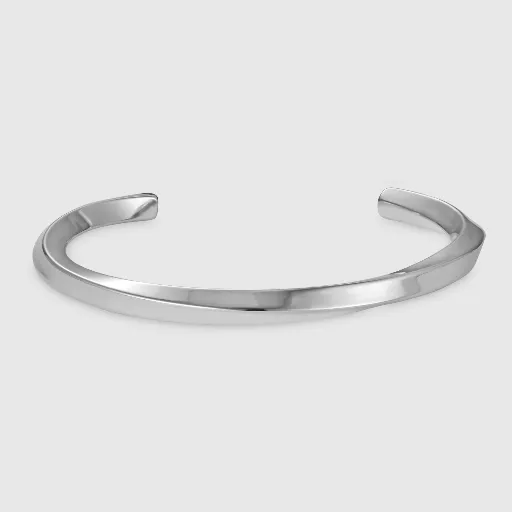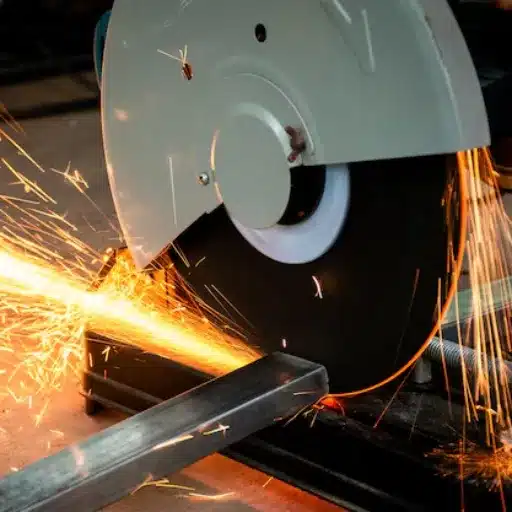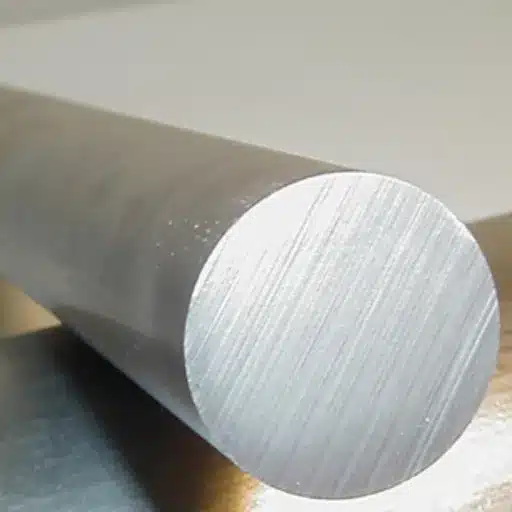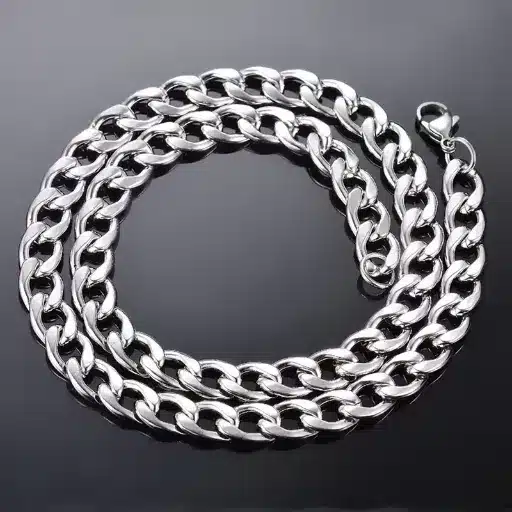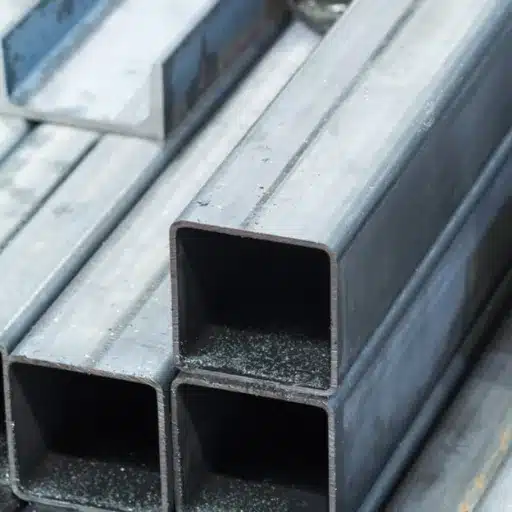Through classification, steel is different. Differentiating factors might be X-ray diffraction, chemical composition, and physical bonding in stainless steel types. Understanding the subtle yet enormous difference between the various grades, depending on the industry, from construction to the food industry, is essential. 304 stainless steel and 316 stainless steel are two commonly utilized grades, yet they constantly compete for attention: which is better for any particular situation? This article discusses key differences between these popular choices regarding composition, properties, and applications. Whatever manufacturer, engineer, or just an interested party with what the world around them is being built from will find this guide enlightening enough to enable them to make an educated choice on the right-grade stainless steel for their needs.
Introduction to Stainless Steel Grades
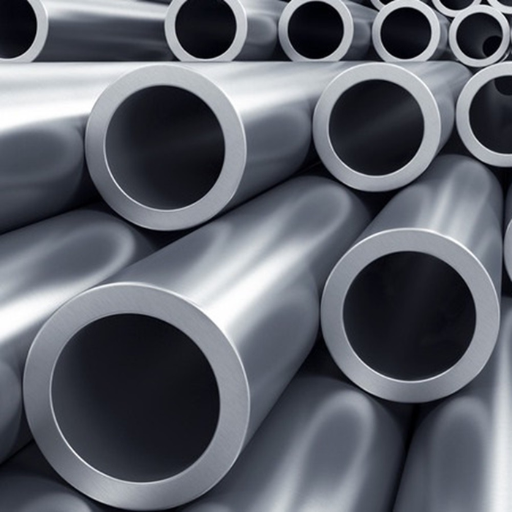
There are numerous grades of stainless steel depending upon its composition and its intended use, the most commonly used of which are the 304 and 316 grades. Grade 304 is widely recognized as a multi-purpose grade since it is relatively affordable and finds application in household articles, kitchen utensils, and other general applications. Grade 316 has added molybdenum to improve corrosion resistance, especially in marine environments or in the presence of certain chemicals. The choice of these two types of stainless steels depends largely on the environmental and performance conditions; 304 is suitable where less corrosion resistance is required, but budget is an issue, whereas 316 is used for the harsh environment requiring extra service life or durability.
What is Stainless Steel?
Stainless steel is an alloy used for its durability and corrosion resistance in many industry applications. It chiefly includes iron, chromium, and other elements or impurities.
Detailed Comparison of 304 and 316 Stainless Steel
304 and 316 stainless steels are considered stronger in rust resistance and are broadly used in almost all applications. Taking note of specific differences in these two grades can aid the unsuspecting user in choosing one for the job.
Composition Differences
304 Stainless Steel:
- Made up of about 18-20% chromium and 8-10.5% nickel.
- Lower in molybdenum content (usually none).
- Good resistance to oxidation and general corrosion.
316 Stainless Steel:
- Made up of 16-18% chromium, 10-14% nickel, and 2-3% molybdenum.
- Molybdenum significantly increases chloride resistance, especially in marine or harsh chemical environments.
Corrosion Resistance
304 Stainless Steel:
- Suitable for use in any environment that is less chemically aggressive.
- It is an excellent choice for oxidation under mild atmospheric conditions and in low-salinity water exposure.
316 Stainless Steel:
- Has high pitting and crevice corrosion resistance due to molybdenum content.
- Used in environments high in salt, such as local areas, or wherever frequent contact with chlorides, acids, or industrial chemicals occurs.
Strength and Durability
Both grades give high tensile strength and great long-term durability:
304 Stainless Steel:
- Has a typical yield strength of 215MPa (31,000 psi).
- Has an ultimate tensile strength of 505MPa (73,200 psi).
- Has excellent forming and welding characteristics.
316 Stainless Steel:
- A bit lower in yield strength, at 205 MPa (29,700 psi).
- Has nearly the same ultimate tensile strength as 304, at 515 MPa (74,700 psi).
- Has creep strength and tensile strength over long periods, making it the best choice for high-stress environments.
Applications
304 Stainless Steel:
- Widely applied in domestic uses such as kitchenware, sinks, etc.
- Is seen in architectural instances and on less industrial indoor exposures to corrosion.
316 Stainless Steel:
- Is preferred in cases of intensified environments such as chemical processing, marine, and medical.
- Is employed as surgical instruments, boat fittings, and storage tanks that can withstand caustic chemical and saline exposures.
Cost-wise Comparison
316 stainless steel tends to cost approximately 20-30% more than 304 stainless steel due to the inclusion of molybdenum and nickel. Even more expensive, this might be worth considering in highly demanding environments where corrosive resistance and longevity can make or break a steel grade.
Practical Selection Guide
| Criteria | 304 Stainless Steel | 316 Stainless Steel |
|---|---|---|
| Corrosion Resistance | Moderate | High (especially in chloride-rich environments) |
| Cost | Lower | Higher |
| Marine Applications | Not recommended | Highly suitable |
| Industrial Use | Ideal for low-exposure environments | Best for chemically aggressive conditions |
| Strength | Comparable tensile strength | Superior under high-stress use |
Understanding the differences and distinct use cases of stainless steels 304 and 316 is very important so that professionals can make informed choices for a certain task and guarantee long life and savings. Whether for household use or industrial projects, the grade chosen can further affect the success and durability of the application.
Importance of Choosing the Right Grade
Choosing a proper stainless steel grade is vital in the performance, durability, and cost-effectiveness of any project I undertake. By analyzing the individual needs, such as corrosion resistance, strength, and environment, I can assure the users that they obtain the material that best suits their needs and performs better in service with time. The decision thus saves the user potential losses due to failure and also saves them on capital expenditure in maintenance and replacements.
Comparative Analysis: 304 vs 316 Stainless Steel
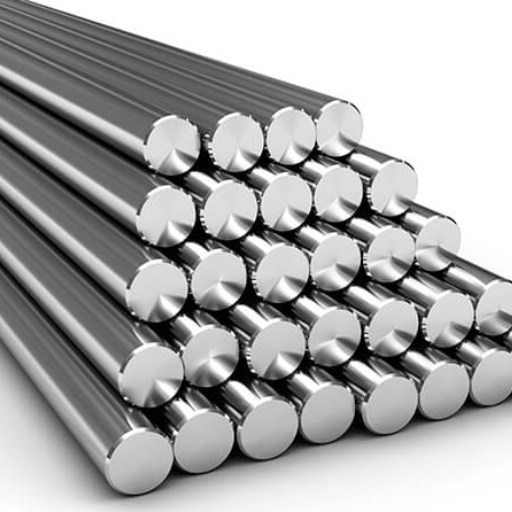
| Parameter | 304 Stainless Steel | 316 Stainless Steel |
|---|---|---|
| Corrosion Resistance | Good, handles mild environments. | Superior, resists salt and chemicals. |
| Key Alloy Element | No molybdenum content. | Contains 2-4% molybdenum. |
| Temperature Resistance | Performs well under high heat. | Better for continuous heat exposure. |
| Durability | Versatile, durable across applications. | Enhanced for harsh conditions. |
| Cost | More cost-effective. | 40% more expensive. |
| Applications | Food tools, medical equipment. | Marine parts, chemical processing gear. |
| Flexibility | Good for general-purpose use. | Best for saline and industrial environments. |
| Maintenance | Requires regular but standard upkeep. | Withstands tougher conditions with less wear. |
| Welding Properties | Strong, reliable welds. | Similar weld properties, stronger in marine use. |
Corrosion Resistance of 304 and 316
| Parameter | 304 Stainless Steel | 316 Stainless Steel |
|---|---|---|
| Chromium Content | 18-20% | 16-18% |
| Nickel Content | 8-10.5% | 10-14% |
| Molybdenum Content | None | 2-3% |
| Corrosion Resistance | Good, except in chloride-rich environments | Excellent, especially in chloride-rich areas |
| Chloride Resistance | Susceptible to pitting corrosion | Superior resistance to pitting corrosion |
| Cost | More affordable | Higher cost |
| Applications | Kitchen, food processing, architectural uses | Marine, chemical, medical, harsh environments |
| High-Temperature Use | Good, but limited in extreme conditions | Excellent, retains strength at high temps |
| Weldability | Excellent | Excellent |
| Durability | Durable | More durable in harsh conditions |
Heat Resistance Properties
Both stainless steels 304 and 316 offer excellent heat resistance properties and find applications in high-temperature environments. The important heat resistance properties of these materials are as follows.
- Oxidation Resistance
- 304 Stainless Steel can resist oxidation up to temperatures of 870°C (1598°F) for continuous service and up to 925°C (1697°F) for intermittent service.
- Due to the molybdenum, 316 Stainless Steel is considered to have slightly better oxidation resistance, although handling temperatures up to 870°C (1598°F) are also possible.
- Carbide Precipitation Resistance
- 304 Stainless Steel resists carbide precipitation on welding and other high-temperature applications. However, lower-carbon variants like 304L are much more efficient.
- 316 Stainless Steel, especially 316L, provides better resistance to carbide precipitation and is preferred for welding applications.
- Creep Strength
- Both 304 and 316 exhibit good creep strength at high temperatures.
- However, 316 stainless steel with molybdenum performs better in creep strength in extreme temperatures.
- Thermal Conductivity
- The thermal conductivity of 304 Stainless Steel is around 16.2 W/m·K at 100°C.
- The thermal conductivity for 316 Stainless Steel is slightly lower at 14.6 W/m·K at 100°C.
- Melting Point
- 304 Stainless Steel has a melting temperature between 1400°C and 1450°C (2552°F to 2642°F).
- 316 Stainless Steel takes a melting temperature range from 1375°C to 1400°C (2507°F to 2552°F).
These properties demonstrate that both grades are suitable for exposure to heavy heat in industrial operations while maintaining the integrity and strength of the material.
Price Difference Between 304 and 316
| Key Point | 304 Stainless Steel | 316 Stainless Steel |
|---|---|---|
| Base Price | Lower | Higher |
| Composition Impact | No molybdenum | Includes 2-3% molybdenum |
| Cost Increase Percentage | Approximately 40% lower than 316 | Approximately 40% higher than 304 |
| Chloride Resistance | Susceptible to pitting | Superior resistance |
| Corrosion Resistance Value | Good in mild environments | Excellent in harsh conditions |
| Initial Investment | Cost-effective | More expensive upfront |
| Long-Term Savings | Lower initial cost | Reduced maintenance costs |
| Applications | Kitchen, architectural, indoor uses | Marine, medical, industrial uses |
Applications of 304 and 316 Stainless Steel
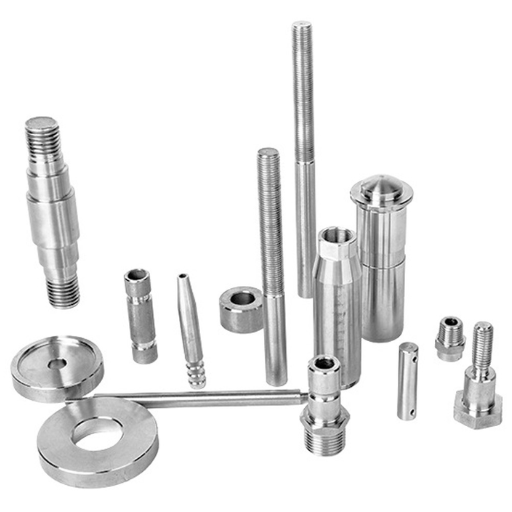
| Key Point | 304 Stainless Steel | 316 Stainless Steel |
|---|---|---|
| Kitchen Equipment | Sinks, pots, and appliances | Equipment in saline environments |
| Architectural Uses | Indoor decorative hardware, panels | Coastal architectural features |
| Food Processing | Equipment for mild environments | High-saline food equipment |
| Medical Supplies | Sterile tubing and storage | Surgical and pharmaceutical instruments |
| Marine Applications | Not ideal | Boats, docks, and marine fittings |
| Chemical Industry | Non-chloride uses | Handles harsh chemical processing |
| High-Temperature Use | Heat exchangers, residential systems | Industrial systems, extreme heat systems |
| Durable Furniture | Indoor-use furniture and fixtures | Outdoor site furnishings |
| Automotive Parts | Trim and decorative parts | Specialized components for harsh settings |
| Industrial Use | Mild chemical environments | High chloride or heavy industrial use |
Common Uses of 304 Stainless Steel
- Kitchen Equipment
304 steel has excellent corrosion resistance and hygienic properties, making it suitable for kitchenware such as sinks, utensils, and cutlery. This grade resists food acids and cleaning detergents and is, therefore, an ideal choice.
- Architectural Applications
These stainless steels are widely employed in interior architectural design, including railings, decorative panels, and furniture. Their beauty and durability make them commonly used in places of heavy traffic.
- Automotive Components
Because of its resistance to rust and durability under exposure to varying elements, 304 stainless steel is used in automotive trim, exhaust systems, and various non-structural applications.
- Industrial Machinery
Industries such as dairy, beverage, and food processing use 304 stainless steel in manufacturing parts, storage tanks, and pipes where hygiene and sanitation must be maintained.
- Medical Equipment
304 stainless steelin the medical lstrial instruments, sterilized-for-the-taking, immune against heavy cleaning, and sterilization are-used-also.
Typical Applications of 316 Stainless Steel
316 stainless steel is known for its higher corrosion resistance and strength owing to molybdenum and finds applications in different industries and environments. In the following five scenarios listed, 316 stainless steel finds standard applications:
- Marine Equipment and Processes
Due to almost total resistance to corrosion by chlorides and saltwater in its atmosphere, marine fastenings are made of these steels. Boat fittings and propeller shafts are therefore of stainless steel with adequate durability for long-term exposure in a corrosive marine environment.
- Chemical Processing Equipment
316 stainless steel is a metal that resists chemical corrosion extremely well. It is the choice for building equipment such as heat exchangers, storage tanks, and piping systems used in the chemical and pharmaceutical industries. It best withstands exposure to aggressive chemicals under high-pressure conditions.
- Food Processing and Beverage Industry
316 stainless steel is used in food processing and beverage production, where brine solutions and acidic foods or cleaning chemicals are exposed. It meets high hygienic standards and cannot be contaminated.
- Medical and Surgical Instruments
Sterilization and corrosion resistance qualify 316 stainless steel as the best material for surgical instruments, medical implants, and hospital equipment, providing full safety and viability.
- Oil and Gas Industry
316 stainless steel is used for offshore and subsea applications in pipelines, valves, and fittings because of its resistance to corrosion in environments high in salinity and with sulfur compounds. Its robustness ensures structural integrity under demanding conditions.
Choosing Between 304 and 316 for Specific Industries
| Industry | Environmental Conditions | 304 Stainless Steel | 316 Stainless Steel |
|---|---|---|---|
| Food Processing | Mild environments | Suitable for general equipment | Best for saline environments |
| Medical Equipment | Sterile, non-corrosive settings | Adequate for storage/tubing | Ideal for surgical instruments |
| Marine Industry | High salinity, constant moisture | Not recommended | Perfect for boats/marine fittings |
| Chemical Processing | Exposure to corrosive chemicals | Limited to mild chemical use | Handles harsh chemicals effectively |
| Construction | General or indoor applications | Suitable for indoor finishing | Best for coastal architecture |
| Automotive | Moderate environmental exposure | Good for trim/decorative parts | Ideal for harsh settings |
| Pharmaceutical | Hygienic and non-reactive requirements | Works for basic applications | Superior for chemical resistance |
| Industrial Machinery | Varies based on processing conditions | For non-chloride environments | Withstands chlorides/harsh conditions |
| Residential Use | Indoor and kitchen fixtures | Excellent for appliances/sinks | Best for salty air environments |
| Outdoor Furniture | Long-term outdoor exposure | Suitable for mild climates | Ideal for extreme weather conditions |
Benefits and Drawbacks of 304 and 316 Stainless Steel
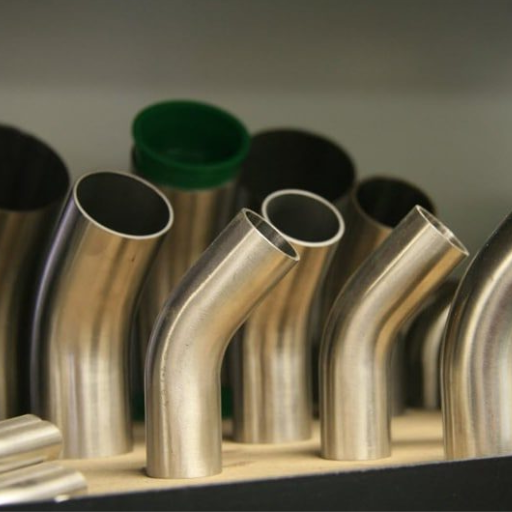
| Parameter | Benefits of 304 | Drawbacks of 304 | Benefits of 316 | Drawbacks of 316 |
|---|---|---|---|---|
| Corrosion Resistance | Performs well in mild conditions | Unsuitable for chloride environments | Excels in harsh, chloride-rich areas | Higher cost |
| Cost | More affordable | Less durable in corrosive settings | Justifies price with durability | Around 40% more expensive |
| Durability | Durable for general applications | Limited near-seawater | Highly durable in harsh environments | May be overkill for mild environments |
| Weldability | Excellent for diverse welding needs | Not as strong in chlorides | Strong welding capability, chloride-safe | Requires careful cost consideration |
| Applications | Indoor, kitchen, décor, lightweight uses | Limited in the marine or chemical industries | Marine, medical, industrial, saline use | Over-specified for non-corrosive uses |
Advantages of 304 Stainless Steel
- Corrosion Resistance
304 Stainless steel acts against the atmosphere, corrosion agents, bases, and acids, especially. To be employed for general-purpose applications.
- Cost-Effectiveness
It is less expensive than others, like 316 stainless steel, because it contains less nickel and molybdenum, while still being adequate for most uses.
- Ease of Fabrication
It is customizable regarding formability and weldability, which allows 304 stainless steel to be shaped, machined, and fabricated in a given range of goods without compromising its structural integrity or strength.
- High Durability
Strong and long-lasting, this material can withstand wear and tear in residential and industrial applications and is guaranteed to be reliable over time.
- Aesthetic Appeal
304 stainless steel’s bright polished look spells beauty and thus is preferred for decorative and visible applications, such as kitchen appliances and architectural elements.
Benefits of 316 Stainless Steel
- Superior Corrosion Resistance
Due to the inclusion of molybdenum, 316 stainless steel is resistant to pitting and crevice corrosion, primarily due to chloride exposure in locations or situations such as coastal areas or industrial settings.
- High-Temperature Tolerance
Since it can be used at high temperatures without losing strength or shape, this stainless steel grade finds applications in high-heat fields like heat exchangers or chemical processing equipment.
- Excellent Weldability
The grade is weldable to a high standard, allowing the joining of 316 stainless steel without losing strength or corrosion resistance, which is particularly vital for complex fabrication applications.
- Hygienic
316 stainless steel is better suited for medical devices and food processing equipment as it is non-porous, can be easily cleaned, and is well resistant to the growth of bacteria.
- Durable in Harsh Conditions
It is a grade of stainless steel that is suitable for marine applications, chemical storage tanks, and desalination plants, as it withstands harsh chemicals and saline conditions.
Drawbacks to Consider for Each Grade
In my experience, 304 stainless steel would be inferior given its lower resistance to chlorides than 316, rendering the 304 subject to corrosion in highly saline or fairly harsh chemical environments. While 316 stainless steel has lower corrosion resistance, the higher price may act as a deterrent, especially if the project is constrained by budget and the additional durability is not required. Thus, the choice between the two depends on the cost versus environmental demands.
Conclusion: Making the Right Choice
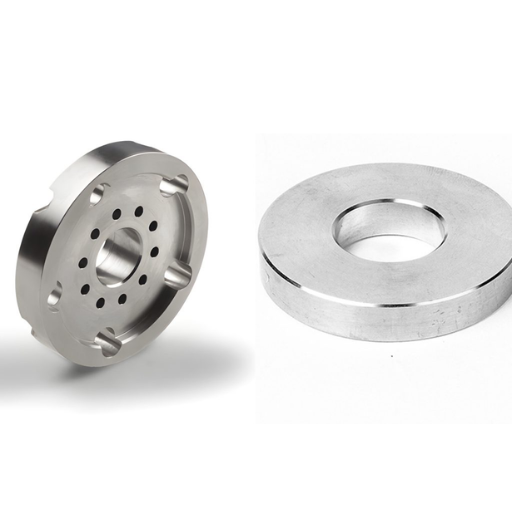
Consider the specific project requirements when deciding between 304 and 316 stainless steel. If your application is exposed to highly corrosive environments- a marine environment, for example- or harsh chemicals, 316 would be better to consider due to its superior corrosion resistance. On the other hand, general-purpose applications with minimal exposure to extreme situations will find 304 to be a reliable and reasonably priced contender. Ultimately, the decision should be weighed against the environmental demands, durability considerations, and budget constraints to ensure that the best alternatives are considered.
Summary of Key Differences
Comparing stainless steel 304 and 316 involves looking at their peculiarities, applications, and prices. Provided below is a detailed breakdown with factual data to help guide your decision:
- Corrosion Resistance:
- Stainless Steel 304 contains 18% chromium and 8% nickel. It is very resistant to corrosion in most normal environmental conditions. Nevertheless, saline or chloride-rich conditions are not suitable for this metal when pitting attacks it.
- Stainless Steel 316 contains 16% chromium, 10% nickel, and 2% molybdenum. The additional molybdenum makes it more resistant to chlorides, making it the best choice for marine environments or where deicing salts or harsh chemicals are involved.
- Strength and Durability:
- Both are strong and durable but 316 is better in tensile strength. I.e., 316’s tensile strength is about 579 MPa (84,000 psi), whereas for 304, it is 515 MPa (74,700 psi), bearing ASTM standards.
- Applications:
- 304 Applications: This grade is used in kitchens, household appliances, and structural applications characterized by a low risk of corrosion and where economy is considered. Its applications include sinks, food processing equipment, and decorative all.
- 316 Applications: Because of its better corrosion resistance, it is used in chemical processing, marine equipment, and medical implants. It is also commonly used in pharmaceutical and food-grade manufacturing, where contamination prevention is crucial.
- Price Difference:
- 304 Stainless Steel is cheaper because it does not contain molybdenum. This price is mostly 30-40% less than 316, based on the global nickel and molybdenum price variation.
- 316 Stainless Steel, on the other hand, is priced higher due to its superior properties. For instance, current market prices reveal that 316 stainless steel might cost anywhere from $3 to $4 a pound, compared to around $1.80 to $2.50 for 304, depending on supplier and grade.
- Environmental Suitability:
- While both are recycled and sustainable, 316, due to its extra composition, is better suited to environmental extremes such as exposure to saltwater or resistant industrial atmospheres.
Key Points to Note During Selection:
- Go for 304 if cost is a significant constraint, and the steel is not subjected to harsh conditions, i.e., products for everyday use in standard household environments.
- Use 316 in situations where durability is a key feature and performance is expected in harsh environments, such as marine dock fittings, coastal infrastructure, or medical tools.
Knowing the summarized differences will ensure that, along with your project needs, you pick the wrong steel grade that affords the best durability, cost efficiency, and reliability. When in doubt, consult a supplier or conduct specific environmental testing.
Final Recommendations for Selecting Stainless Steel
When choosing stainless steel, I consider the conditions and performance requirements. Being a general-purpose application, 304 tends to provide good value while maintaining low corrosion resistance. But for harsher environmental considerations, like air that is moist and salty by the coastal atmosphere or quite chemically aggressive, I choose 316 for its greater durability and resistance. The grade is thus associated with the application to ensure long-term reliability at lower costs. Whenever I get confused, I reach out for expert opinion or have environmental tests carried out so that I don’t go in blindly.
References
- Oxidation Behavior of Stainless Steels 304 and 316
Published on ScienceDirect, this study examines the oxidation behavior of 304 and 316 stainless steels under specific atmospheric conditions.
Link to the article - Comparative Study of Pulsed Nd: YAG Laser Welding of AISI 304 and AISI 316 Stainless Steels
This research focuses on the welding properties and mechanical performance of 304 and 316 stainless steels.
Link to the article - Corrosion Behavior of 316L and 304 Stainless Steels in Industrial-Marine-Urban Environments
Published by the Royal Society of Chemistry, this field study compares the corrosion resistance of 304 and 316 stainless steels in various environments.
Link to the article
Frequently Asked Questions (FAQ)
What is the main difference between 304 stainless steel and 316?
The main difference between 304 stainless steel and 316 stainless steel is their chemical composition. 316 stainless steel contains molybdenum, which enhances its corrosion resistance, especially in marine environments and in the presence of chlorides. This makes 316 a preferred choice for applications exposed to harsh conditions.
Is 316 SS always better than 304 for corrosion resistance?
Yes, 316 SS is generally considered to have superior corrosion resistance compared to 304 SS, especially in harsh environments or those containing chlorides. Adding molybdenum in 316 enhances its ability to resist pitting and crevice corrosion, making it a better choice for applications like food processing and chemical processing.
Why is 316 more expensive than 304 stainless steel?
316 stainless steel is more expensive than 304 due to its higher nickel content and the addition of molybdenum, which increases manufacturing costs. However, the enhanced properties and durability of 316 justify the price difference, especially for applications requiring superior corrosion resistance.
Can 304 or 316 be used in food processing?
Both 304 and 316 stainless steel can be used in food processing, but 316 is often preferred for applications involving salty or acidic conditions due to its superior corrosion resistance. The excellent corrosion resistance of 316 makes it a safer choice for food contact applications.
What grades of stainless steel are commonly compared?
The most commonly compared grades of stainless steel are 304 and 316. While both are austenitic stainless steels and share many properties, the presence of molybdenum in 316 gives it an edge regarding corrosion resistance in challenging environments.
How does the chemical composition differ between 304 SS and 316 SS?
The chemical composition of 304 SS includes approximately 18% chromium and 8% nickel, while 316 SS typically contains about 16% chromium, 10% nickel, and 2% molybdenum. This addition of molybdenum in 316 provides better resistance to certain corrosive elements.
In what applications is 316 stainless steel used over 304?
316 stainless steel is often used in marine applications, chemical processing, and environments with high chloride exposure. Its superior resistance to corrosion makes it ideal for conditions detrimental to 304, such as coastal areas or chemical manufacturing facilities.
What does the austenitic grade mean for 304 and 316?
Austenitic grades of stainless steel, such as 304 and 316, are known for their excellent formability, weldability, and resistance to corrosion. This makes them suitable for various applications, from kitchen appliances to industrial equipment, where durability is essential.

